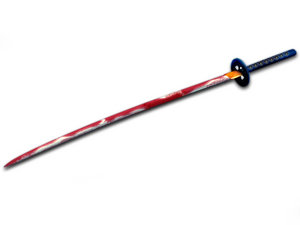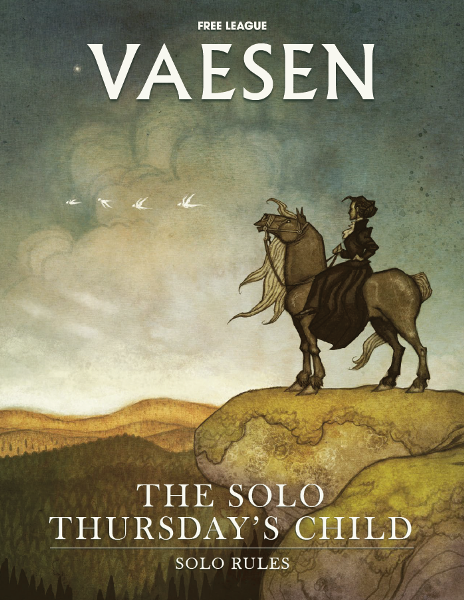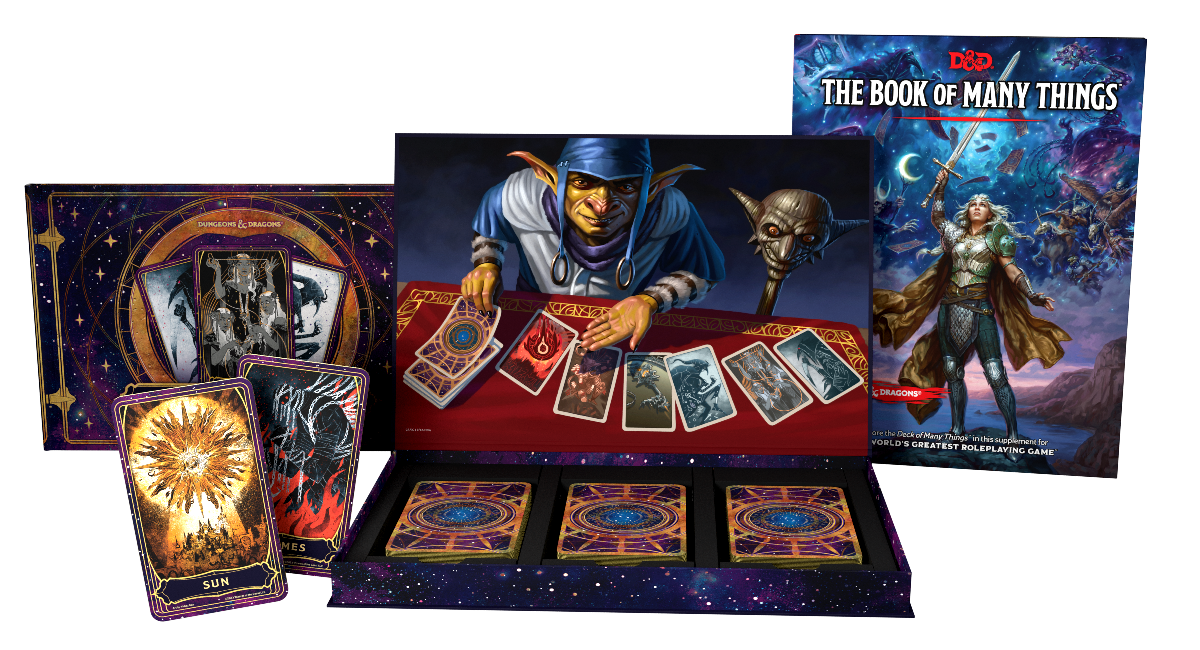Lock ‘n’ Load
By The Warden
 Jonathan Tweet was talking about flat damage on the 13th Age website this week and offered up some positive arguments favoring the locked output of weapon damage rather than a random dice roll. The predominant point is the increased speed to the game (though I’m not completely agreeing with his thoughts on modifiers “slowing down” the game), but it’s equally interesting to look at it from a RPG mechanics standpoint.
Jonathan Tweet was talking about flat damage on the 13th Age website this week and offered up some positive arguments favoring the locked output of weapon damage rather than a random dice roll. The predominant point is the increased speed to the game (though I’m not completely agreeing with his thoughts on modifiers “slowing down” the game), but it’s equally interesting to look at it from a RPG mechanics standpoint.
What is the purpose of the random damage roll and it’s fixed cousin? Which games are either one best suited for and when would there be a benefit to one versus the other? And, more importantly, does it even matter?
Reflecting on my own gaming life, I think I’ve been rolling damage in damn near every game I’ve played. With a few exceptions here and there (some from playtests, others from one shots), the majority of my true pastime games were damage diced. Yet my own work reflects a fixed damage system using an improved success multiplier (the more hits you roll, the higher your damage result), so I’m not stuck on one versus the other.
FIXED VS. RANDOM
Mechanically speaking, there is greater value and fluidity in fixed damage results. It makes perfect sense for a sword, as an example, to cause the same amount of harm every time because the sword does not change. It’s the wielder’s swing that’s the variable and therefore the attack roll is random, not the damage. Switch that up with a counterpoint that the same argument states that the wielder’s swing can barely connect and merely scratch an opponent, concluding a random weapon damage result provides this variety of possibilities. And as a player of random damage games, I love rolling high on the damage die – it’s the hint of mint in a slice of chocolate cake for me. Of course, I also groan when I make a wicked attack roll, only to follow it up with a 1 on the ol’ d8.
There are just as much benefit to either version that they simply open up a parallel universe and start merging together in the pursuit of the perfect combination. Many games incorporate a hybrid of these rolls and modifiers are the popular result. A combination of random dice rolls and a fixed result, the modifier ensures the player they’ll gain at least +2 to their roll, meaning that they’ll always dish out 3 points of damage. Unless your game makes it possible to roll a natural 0. Ouch. But it’s also possible to gain higher results and make them super high. Or a random roll determines the reverse with the weapon remaining static and the character’s contribution to the attack – the strength and accuracy of their swing. This alternative allows you to increase your results by choosing a specific weapon and knowing it will always do more than your little short sword from last level. On the surface, these discrepancies may be minor, but they help demonstrate the game’s tone and focus.
For example, if the emphasis of a game is building a historical or historically-inspired campaign grounded in detail and research, it would make sense to find locked damage results on their weapons using solid research as the basis for these numbers. These weapons would cause 6 + 1d4 damage, let’s say. Or if the emphasis of your game is playing a super-powered hero fighting crime, you’re creating a game of individuals and it’s their exploits you’re drawing attention to – the bigger, the better. These attacks would cause 1d6 + 7 damage because a strong character will always produce at least 8 points of damage through his personal strength.
ANOTHER DICE ROLL?
Invariably, the use of randomized damage is an additional dice roll to the mix. While there is no absolute reason why this should affect every group and every player equally (i.e. some players roll attack and damage dice simultaneously, others can do calculus in their head and count dice for breakfast), it does require an extra die or two to drop. In this way, randomized damage games are mini-dice pool systems just presented in a way that doesn’t read like a dice pool system.
On a larger scale, specifically the duration of a massive battle, random dice rolls can slow down combat from the sheer risk of our worst nightmare: bad dice rolls. Sure, we can hit without a worry, but the damage rolls are coming up 1s and 2s. It’s happened to every single one of us and it happens far more often than we would like… especially when we’re in the middle of doing something really cool. Yes, I have been burned this way many times. It’s the reason why many of us have dice superstitions. (Mine involves rolling only the die with the highest face value at that exact moment. I break all my dice into rows or columns of sides, each one randomly reading whatever value came up when it fell from the bag, and simply picking whatever’s highest. When that one inevitably rolls pitifully low, it is replaced with the next highest result in the column.) The point is it’s a common possibility and it’s a factor of the games we play.
Perhaps that’s the point. Games typically using random damage results involve epic battles across expansive dungeons or wide fields against creatures or armies. What epic battle is over in three rounds? Whereas games grounded in a specific genre or adherence to reality expects their fights to be shorter and grounded, making fixed damage results the option of choice. It’s what makes the roll of damage in combat games a crucial choice as it can have a factor on the size and scope of your battles.
CRITICAL HITS RULE!
Nearly every RPG with random damage does have a temptation: the critical hit. When you roll the highest number of your attack die or beat your opposing target by a certain amount, your damage result benefits. It could be maximized, multiplied, or causes a harmful condition to slow down your opponent on its next turn. Either way, there is always a lure for players (not their characters).
Rolling a critical hit is the $200 jackpot on a slot machine, sometimes complete with all the bells and whistles. (My favorite d20 flashes when it rolls a natural 20. Awesome.) It’s not a huge reward, but it sure does make the night a success. Same goes for the critical hit; it didn’t save the world, but it did help you come back from behind and lay a whupping on that mech.
Damage is what makes our games wicked fun or incredibly frustrating and the critical hit is its peak. Rolling one or two of these in a night becomes the first memory ingrained in your head; rolling 3 or more and there’s applause at the table in your honor. It’s a quick measurement of how well our character fares in that session, a little something for the player similar to a grade on an essay. It’s why there are many video games providing damage displays as an option – we like to see how much blood we drew from our enemies. How much damage we’re allowed to play with can have a dramatic effect on our view of the overall game. A realistic RPG where the heroes can deal over 100 points of damage on a turn seems a bit contradictory and if that opponent is still alive after taking that much bashing, perhaps it’s not as realistic after all.
It’s an important factor in every game because it’s the final result of our experiences. Human experience makes us question doing very well in something for little result. If we’re working at a job where we pull in 60 hours a week and never get a bonus, there will be doubts and a quick search online for something better. Damage tells us that we’re doing a good job in a form we can observe and compare, but if we’re hacking, slashing, blasting, zapping, and nuking away for hours and barely making a difference, there will be doubts and a quick search online for something better.
So the next time you’re pounding an enemy into submission, rolled high for damage or killed your opponent with just one shot, take a moment to think about what damage means to you. And without getting into the fact that we’re fantasizing about stealing the last breath from a living creature, just remember how great that feels. Thanks, damage.



